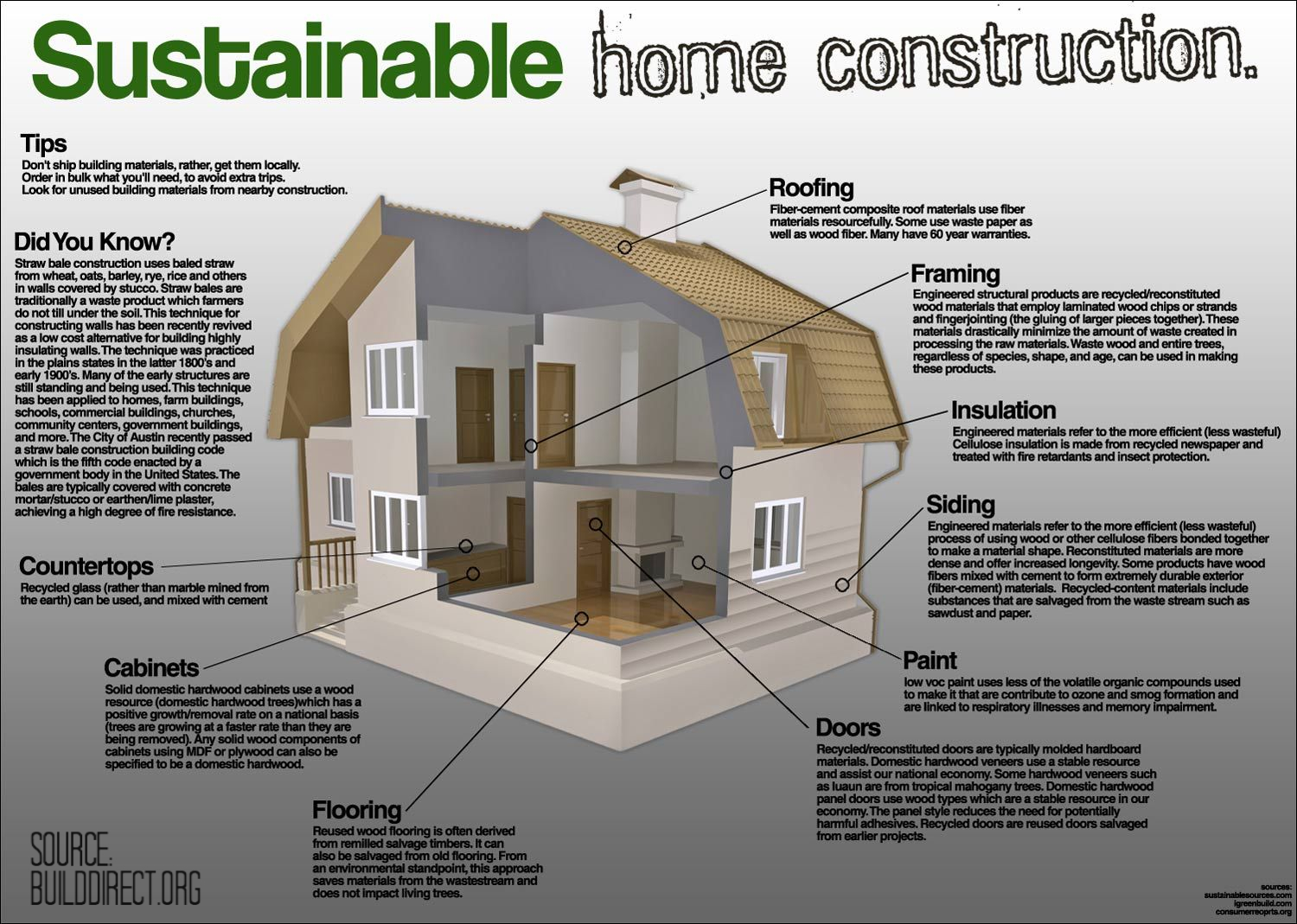GREEN BUILDING, THE ADVANTAGES OF A SUSTAINABLE CHOICE
Once upon a time there were three little pigs. When they were old enough, the time came for them to seek their fortunes. The first pig built his house out of straw, the second out of sticks, the third out of bricks. Only the brick house survived the wolf’s attacks.
Oh, things were simpler those days and wolves had an easier existence. If the story was written today, we would read of pigs with a wider range of building possibilities and of a more frustrated, skinny wolf. He would blow at the top of his lungs but the house of straw would not collapse. On the contrary, it would accommodate a very happy pig, satisfied with the high levels of insulation and with the lower environmental impact of his residence. Probably neighbor pigs would live in houses made of bamboo or steel, equally affordable, resistant and comfortable.
Green building materials offer a valid, sustainable alternative to concrete. They help reducing concrete usage overall and consequently limit the quantity of the greenhouse gas carbon dioxide released in the atmosphere during the production of commercial concrete. As a matter of fact, with about 10 billion tons of concrete produced every year, it is one of the most consumed substance in the world. Over 70% of the world’s population lives in a concrete structure. Choosing building materials wisely seems particularly meaningful if we consider that 40% of the CO2 that contributes to climate change actually comes from buildings.

Sizing up our homes also plays a fundamental role in shifting towards a more sustainable lifestyle as a smaller house takes less material to build and fewer resources to maintain indoor comfort.
Straw bales, grass-crete, rammed earth, hemp-crete, bamboo, recycled plastic, wood, mycelium, ferrock, ash-crete, timber-crete...they all pave the way to a more sustainable lifestyle. Green materials, used by human civilization for thousands of years, last a very long time and are sturdy, safe and eco-friendly. They represent for modern building excellent resources which, properly exploited, grant efficient, durable, flexible building envelopes.
Meet SUNIONIAN experienced staff to learn more about current research, codes and certifications and discover innovative technologies and products which may take your projects to the next level. We may also help you selecting the materials and practices suitable to your property in Greece and provide accurate information about building costs and long-term energy saving.
As a matter of fact, if the development costs of sustainable buildings are about 5% higher than the costs of conventional housing projects, the difference in costs get easily covered within the first years. Green building is an investment that guarantees multiplied returns. Green technologies and architecture improve the durability of the building, minimize the costs of refurbishment and grant a reduction of energy costs. Last but not least, they assure a healthier and comfortable environment thanks to their improved insulation and a better indoor air quality.
According to the World Green Building Council, sustainable building continues to evolve as the market progresses and is increasingly present all over the world. The international relevance of these innovative technologies proves that it is not only necessary, but also possible to find the right balance between environmental protection, economic profitability and social awareness.
A selection of articles on climate change, environmental awareness and the need for a more sustainable living can be found at https://www.activesustainability.com/
Learn more about next generation buildings and energy efficiency at https://www.buildup.eu/en
An accurate overview of the green building market, its historical evolution and key market dynamics can be found at https://www.marketresearchfuture.com/reports/green-building-market-4982